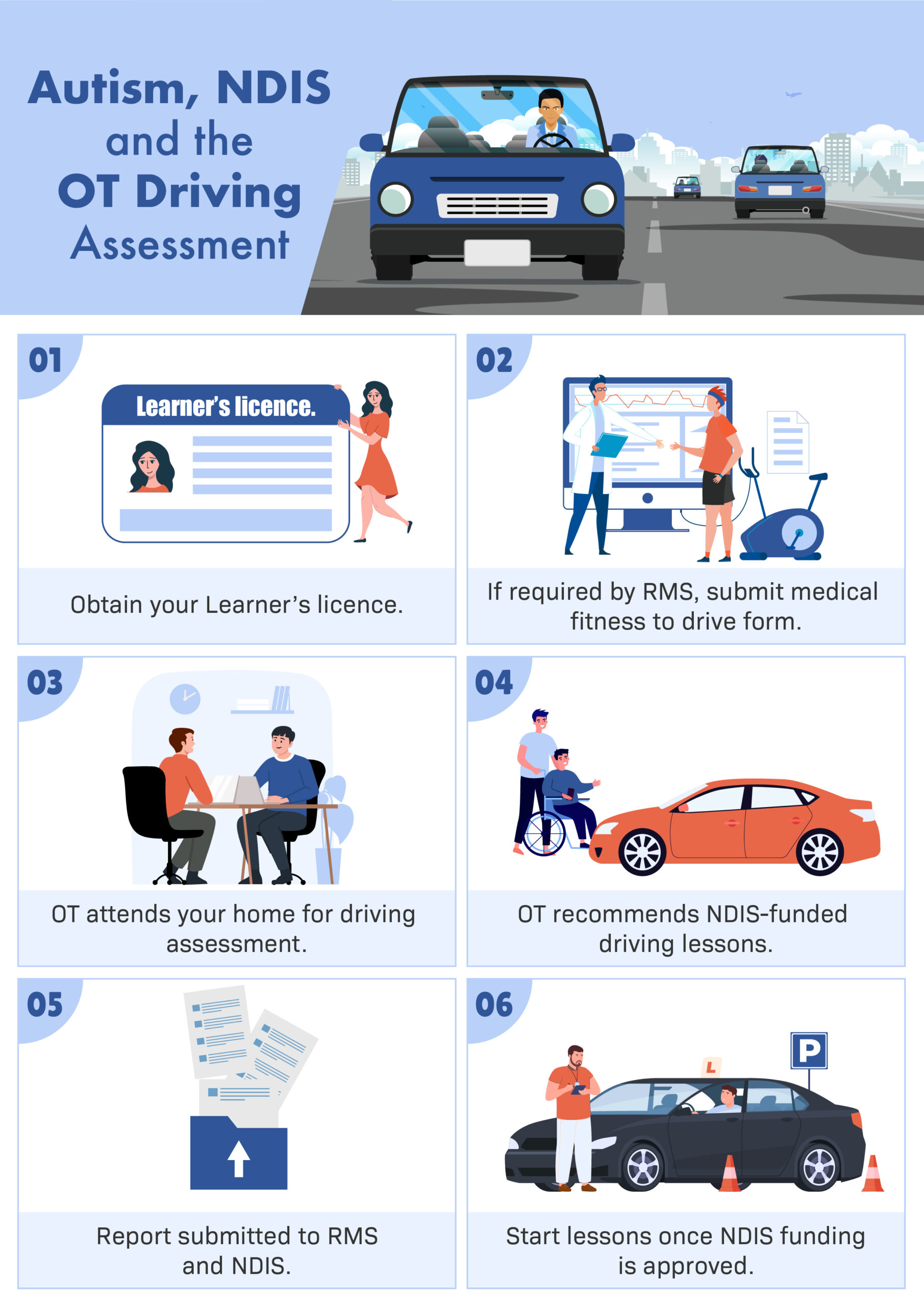For many young adults, gaining the freedom that comes with a driver’s license is an iconic rite of passage. Yet this significant milestone can give rise to unique challenges for those on the autism spectrum. Approaching the intersection of autism and driving requires careful consideration, specialised preparation, and a sometimes extra supports to ensure safety on the open road.
In this thorough guide, we’ll illuminate the path towards a secure and empowering driving experience for drivers with autism and their families.

Understanding Autism and its Impact on Driving
What Is Autism Spectrum Disorder?
Autism Spectrum Disorder (ASD) is a complex neurobehavioral condition characterized by challenges with social skills, repetitive behaviours, speech and nonverbal communication, as well as by unique strengths and differences. The spectrum encompasses a wide range of skills and challenges, from those who require substantial support to highly functioning individuals. Driving, a skill that relies on a complex set of cognitive, motor, and sensory abilities, can present distinct challenges for those living with the diagnosis.
The Link Between Autism and Safe Driving
For individuals with autism, the road to driving responsibly is often compounded by cognitive and sensory differences. These differences can manifest in several ways that directly affect the operation of a vehicle, including:
- Divided attention: While individuals with autism may exhibit heightened focus on specific tasks, they might have difficulty processing multiple sources of sensory information simultaneously, a critical skill for safe driving.
- Predictability and routine: Many individuals with autism thrive in structured, predictable environments. The unpredictable nature of the road can be overwhelming and provoke anxiety, potentially leading to risky behaviours or difficulties with swift decision-making.
- Overstimulation: Sensory sensitivities, such as light and sound, can be intensified on the road, making driving a potentially distressing experience.
- Concentration challenges: Maintaining concentration over extended periods is often a hurdle for individuals with ASD. Driving necessitates consistent vigilance and attention to surroundings, traffic laws, and the actions of other drivers.
Preparing Young Drivers with Autism
Obtaining Learner’s Licence
The journey to driving independence begins with successfully obtaining a learner’s permit, which requires passing the RMS knowledge test. For young drivers with autism, preparing for this exam can be supported by strategies that accommodate their learning styles. Utilizing visual aids, interactive practice tests, and clear, step-by-step guides can greatly enhance their comprehension of the rules of the road.
Declaring Autism to the RMS
When applying for a learner’s permit, it is essential to declare any condition that may affect driving. When declaring autism to the Roads and Maritime Services (RMS), documentation from a healthcare professional can be beneficial. The RMS may also ask your GP to complete the Medical Fitness to Drive form. Honesty with the RMS paves the way for a supportive and understanding approach, fostering a more inclusive driving education process.
Occupational Therapy (OT) Driving Assessment
Once the learner’s licence is obtained, an OT driving assessment may be required to determine the driving capabilities of individuals with ASD. An OT driving assessment provides a detailed analysis of one’s skills and readiness to drive, considering their visual acuity, cognitive functioning, and physical abilities. This personalized evaluation includes both off-road tests and behind-the-wheel observations to determine the driver’s proficiency. Tailored recommendations are offered based on the assessment outcomes, which may include vehicle modifications or adaptive driving lessons to support the unique needs of the driver and promote a safe driving experience.
Tips for Parents and Guardians
Families play a central role in the journey to independent driving for young adults with autism. Some critical aspects to consider include:
- Gradual Exposure: Begin with off-road vehicle familiarization to allow the driver to acclimate to the vehicle’s controls and environment.
- Regular Communication: Establish open channels of communication to address any concerns or difficulties the learner is experiencing.
- Structured Practice: Develop a structured practice schedule that incorporates a variety of driving conditions and times of day to help the learner adapt to different environments.
Navigating Sensory Sensitivities on the Road
Stress and Anxiety Management
Preparing for the emotional challenges of driving is equally important as mastering the physical skills. Here are some strategies to consider:
- Breathing Techniques and Relaxation Exercises: Simple, effective methods to manage anxiety and stay calm behind the wheel.
- Coping Strategies: Develop a set of coping mechanisms, such as pulling over in a safe spot to regroup if needed.
Ensuring Safety and Community Support
The Role of Ongoing Communication and Professional Guidance
Consistent dialogue with occupational therapists, driving instructors, and medical professionals is key to continually assessing and addressing the individual’s driving skills progress. Following the OT driving assessment, the OT may recommend a driving program that focuses on specific areas of difficulty and targets specific goals within a designated timeframe. For NDIS participants, specialised funding may be approved to help cover the costs of driving lessons. Professionals can tailor interventions and strategies to an individual’s profile, ensuring their safety and success.
Drive Towards an Independent and Safe Future
Autism should never be a barrier to the independence and freedom driving brings. By understanding the unique challenges drivers with autism may face, preparing them with tailored resources and support, and fostering an environment that encourages safe and inclusive driving practices, we can ensure that every journey is a secure one – for the individual and the wider community of road users.
Remember, the road to becoming a driver is a personal journey, and one that might take longer and travel a different route for those with autism. But with preparation, resources, and a supportive network around them, it’s a journey that can lead to a fulfilling and rewarding destination. Safe travels.
Learn more about our NDIS driving assessments.
Contact us today to get started.



